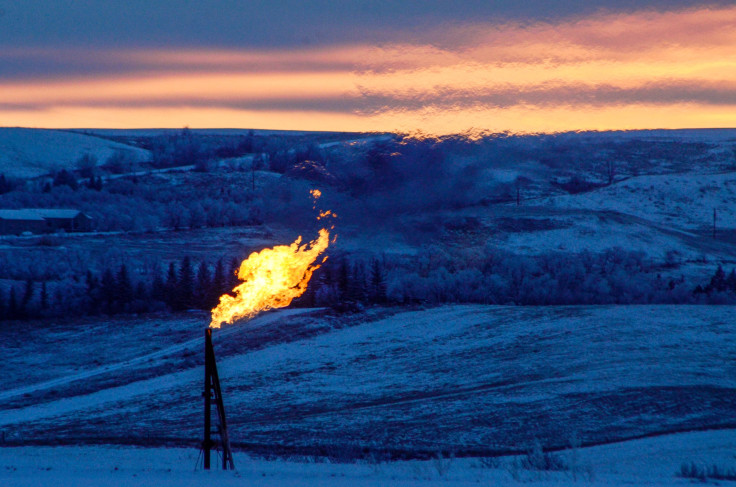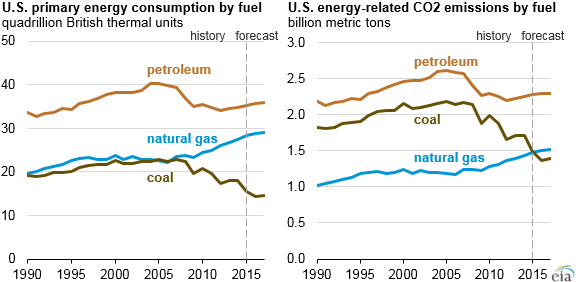Natural Gas To Dethrone Coal As Largest Source Of Energy-Related Carbon Dioxide Emissions In US

Last year, the United States’ natural gas consumption was 81 percent higher than its coal consumption, but, since coal has a higher carbon intensity, carbon dioxide emissions from both sources remained the same. This year, however, emissions from natural gas are projected to surpass those from coal for the first time since 1972.
“Even though natural gas is less carbon-intensive than coal, increases in natural gas consumption and decreases in coal consumption in the past decade have resulted in natural gas-related CO2 emissions surpassing those from coal,” the U.S. Energy Information Administration said in a statement accompanying its latest short-term energy outlook. “EIA's latest Short-Term Energy Outlook projects energy-related CO2 emissions from natural gas to be 10 percent greater than those from coal in 2016.”
The report, released Wednesday, estimates that in this year, natural gas will fuel 34 percent of electricity generation in the U.S., compared with 30 percent for coal. Last year, natural gas was used to generate slightly less than 33 percent of electricity, and coal was used to generate slightly more than 33 percent.

The marked decline in the consumption of coal — which, as recently as 2008, accounted for nearly 50 percent of the electricity generated in the U.S. — has been fuelled by the recent decline in natural gas prices brought about by a fracking boom in the country.
The shift from coal to natural gas has been a largely positive move insofar as the environment is concerned. The consumption of natural gas results in about 52 million metric tons of carbon dioxide for every quadrillion British thermal units (MMmtCO2/quad Btu), while coal's carbon intensity is about 95 MMmtCO2/quad Btu — roughly 82 percent higher than natural gas’.
“Another contributing factor to lower carbon intensity is increased consumption of fuels that produce no carbon dioxide, such as nuclear-powered electricity and renewable energy. As these fuels make up a larger share of U.S. energy consumption, the U.S. average carbon intensity declines,” the EIA said. “Although use of natural gas and petroleum have increased in recent years, the decline in coal consumption and increase in nonfossil fuel consumption have lowered U.S. total carbon intensity from 60 MMmtCO2/quad Btu in 2005 to 54 MMmtCO2/quad Btu in 2015.”
However, as a recent study by NASA showed, methane leaks from the Four Corners region in the U.S. — a natural gas production area — are making natural gas dirtier. Most of these leaks were found to be coming from gas wells, pipelines and processing plants used in fracking operations.
“The sources emitted the gas at rates ranging from a few pounds to 11,000 pounds per hour,” NASA said in a statement. “The study finds that just 10 percent of the individual methane sources are contributing half of the emissions.”
© Copyright IBTimes 2024. All rights reserved.






















